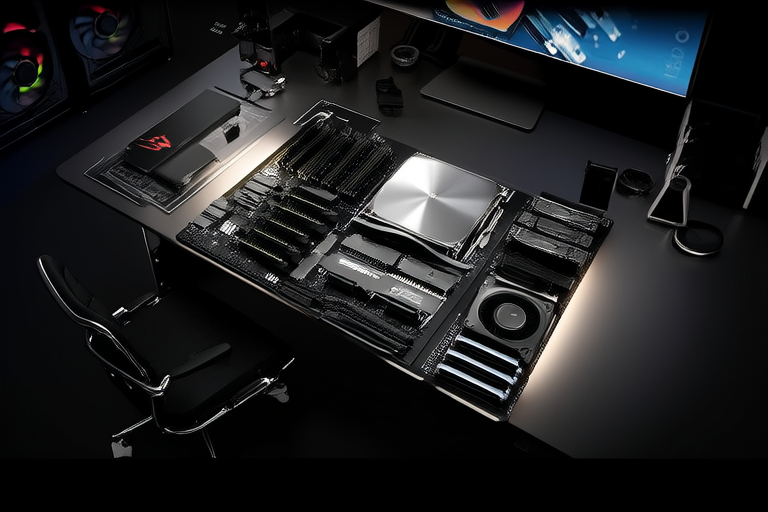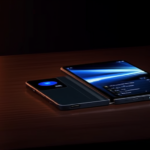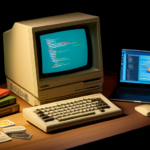The Ultimate Guide to Building a High-Performance Gaming PC
Introduction
Building your own gaming PC offers unparalleled benefits compared to purchasing a pre-built system. A custom-built PC allows you to tailor every component to your specific needs, ensuring optimal performance for your favorite games and applications. Unlike pre-built systems, which often include unnecessary software or subpar components, a self-assembled PC gives you complete control over quality and functionality. Additionally, the process of building your own rig is an educational and rewarding experience that deepens your understanding of computer hardware. Whether you’re a casual gamer or a competitive enthusiast, creating a high-performance gaming PC ensures you get the best value for your money while enjoying the flexibility to upgrade in the future.
Planning Your Build
Before diving into the assembly process, careful planning is essential to ensure a smooth build and maximize performance. Start by setting a realistic budget based on your gaming requirements. High-end gaming setups demand more investment, but even mid-range builds can deliver excellent results with smart choices.
Next, focus on selecting the right components:
- CPU (Central Processing Unit): The brain of your PC, the CPU determines how efficiently your system handles tasks. For gaming, prioritize models from Intel’s Core i5/i7 or AMD’s Ryzen 5/7 series.
- GPU (Graphics Card): The GPU is crucial for rendering visuals in games. NVIDIA’s GeForce RTX series and AMD’s Radeon RX lineup are popular choices, with higher-tier models offering better performance for demanding titles.
- RAM (Memory): Aim for at least 16GB of DDR4 RAM to ensure smooth multitasking and gaming performance. Faster speeds (measured in MHz) can provide marginal improvements in certain scenarios.
- Storage: Use an SSD (Solid State Drive) for your operating system and frequently played games to reduce load times. Pair it with a larger HDD (Hard Disk Drive) for additional storage if needed.
- Motherboard: Ensure compatibility with your CPU and other components. Look for features like PCIe slots for GPUs, M.2 slots for SSDs, and sufficient USB ports.
- Power Supply (PSU): Choose a reliable PSU with enough wattage to support all your components. Modular PSUs simplify cable management.
- Cooling Solutions: Stock coolers may suffice for mid-range CPUs, but aftermarket air or liquid coolers enhance performance and reduce noise.
- Case: Select a case that fits your motherboard size (ATX, Micro-ATX, or Mini-ITX) and has good airflow and aesthetics.
Compatibility between parts is critical. Verify socket types for the CPU and motherboard, ensure the GPU fits in your case, and confirm that your PSU provides adequate power connectors for all components. Tools like PCPartPicker can help validate compatibility and avoid costly mistakes.
Step-by-Step Assembly Guide
Once you’ve gathered all your components, it’s time to assemble your gaming PC. Follow these steps carefully:
- Prepare Your Workspace: Use a clean, static-free surface and gather necessary tools like a screwdriver and zip ties.
- Install the CPU: Open the motherboard’s CPU socket, align the CPU’s notches, and gently place it in. Secure the retention arm and apply thermal paste if required.
- Attach the CPU Cooler: Mount the cooler according to its instructions, ensuring even pressure across the CPU surface.
- Insert RAM: Locate the RAM slots on the motherboard, align the modules, and press down until they click into place.
- Mount the Motherboard: Install standoffs in the case, then secure the motherboard using screws.
- Add Storage: Attach SSDs and HDDs to their respective mounts and connect SATA cables.
- Install the GPU: Insert the graphics card into the top PCIe slot and secure it with screws.
- Connect Power Cables: Plug the PSU cables into the motherboard, GPU, storage drives, and other components as needed.
- Organize Cables: Use zip ties to manage cables and improve airflow inside the case.
Double-check all connections before proceeding to the next step.
Operating System Installation and BIOS Setup
After assembling your PC, install an operating system (OS). Create a bootable USB drive with your preferred OS (e.g., Windows 10/11) and insert it into your PC. Power on the system, enter the BIOS by pressing the designated key (often Del or F2), and set the USB drive as the primary boot device. Save changes and restart to begin the OS installation process.
Once the OS is installed, update your BIOS to the latest version for improved stability and compatibility. Access the BIOS again and adjust settings like enabling XMP profiles for faster RAM speeds or adjusting fan curves for better cooling. Finally, download and install the latest drivers for your GPU, motherboard, and other peripherals to ensure optimal performance.
Optimizing Performance
To get the most out of your gaming PC, consider these optimization tips:
- In-Game Settings: Adjust graphical settings like resolution, texture quality, and shadow detail to balance visual fidelity and performance. Use benchmarking tools to identify optimal configurations.
- Overclocking: Safely increase the clock speeds of your CPU and GPU to boost performance. Use software like MSI Afterburner for GPUs and follow manufacturer guidelines to avoid overheating or instability.
- Maintenance: Regularly clean dust from your PC’s interior, monitor temperatures with tools like HWMonitor, and defragment HDDs (if applicable). Keep drivers updated to benefit from performance patches.
Always prioritize stability over raw speed when tweaking settings, and back up important data before making significant changes.
Troubleshooting Common Issues
Building a PC doesn’t always go smoothly. Here are solutions to common problems:
- No Power: Check PSU connections, ensure the power switch is on, and verify the outlet works.
- No Display: Confirm the GPU is properly seated, connected to the monitor, and powered. Test with another cable or display if possible.
- System Instability: Inspect RAM seating, update BIOS/drivers, and test individual components for faults.
- Overheating: Reapply thermal paste, clean fans, and ensure proper airflow within the case.
If issues persist, consult online forums or seek professional assistance.
Conclusion
Building a high-performance gaming PC is a fulfilling endeavor that combines creativity, technical skill, and passion for gaming. By carefully planning your build, assembling components with precision, and optimizing performance, you can create a machine tailored to your exact needs. Troubleshooting challenges along the way only adds to the learning experience. Ultimately, the satisfaction of playing your favorite games on a rig you built yourself is unmatched. With this guide, you’re equipped to embark on your journey toward mastering the art of PC building and enjoying the countless advantages it brings.


